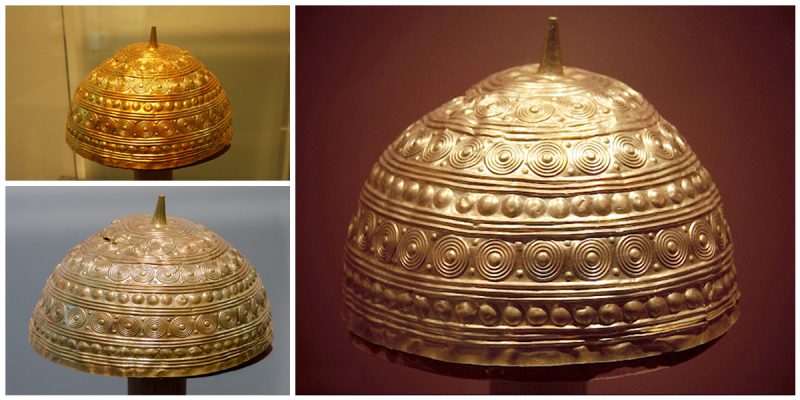The gold Casco de Leiro or “Helmet of Leiro” is a hemispherical object probably dating to the end of the Late Bronze Age (circa 1,000 to 800 BC) in northwestern Iberia.
The hemispherical object weighs 270 grams and its maximum diameter is 19.5 cm with a height of 15 cm (including the appendix which measures 2.3 cm) to the base of the point.
It was a chance discovery made by a local fisherman, José Vicente Somoza, on 7th April 1976 at a small rocky point called Curruncho dos Porcos, by the beach at Leiro (Rianxo) in Galicia, Spain. He discovered it while clearing a piece of land among the rocks to build a shed where he would keep his boat and fishing gear.
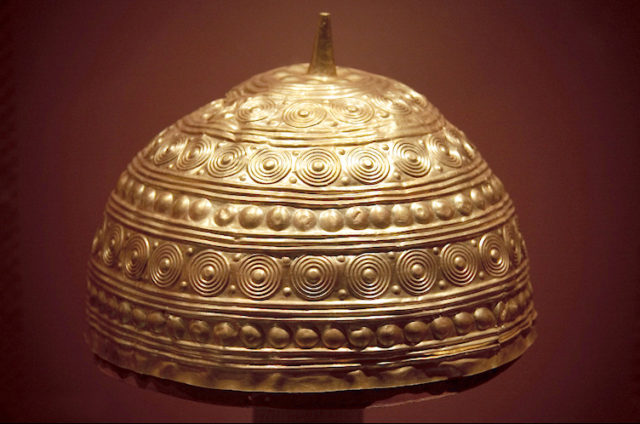
He reported the find to the Guardia Civil of Rianxo and the Department of Archaeology at the Instituto Padre Sarmiento. The find was transferred to the Museo Arqueolóxico e Histórico of A Coruña, where it is conserved.
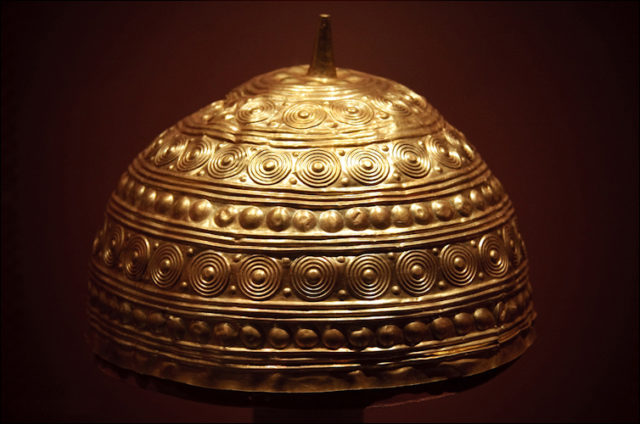
The entire cap, hammered from a single casting of gold, is decorated with motifs arranged in six horizontal bands of repeated concentric circles.
The object was considered, from the very start, to be a gold helmet dating from the culture of the hillfort settlements. It is believed that it belonged to the grave goods found in the tomb of a cief or a high-status warrior.
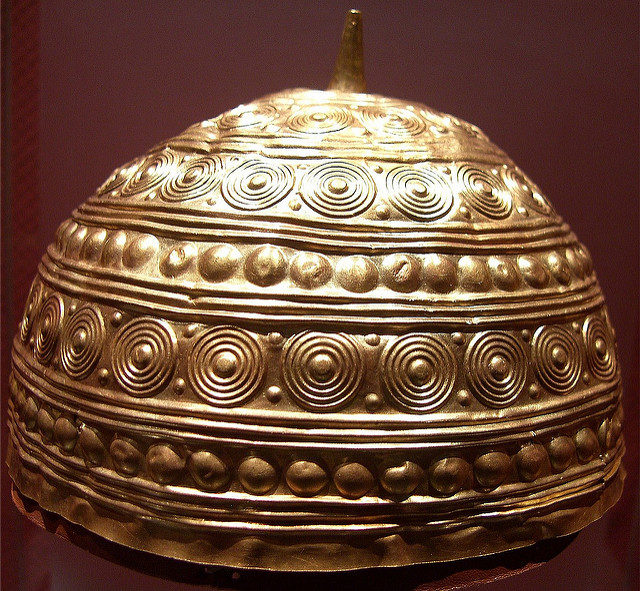
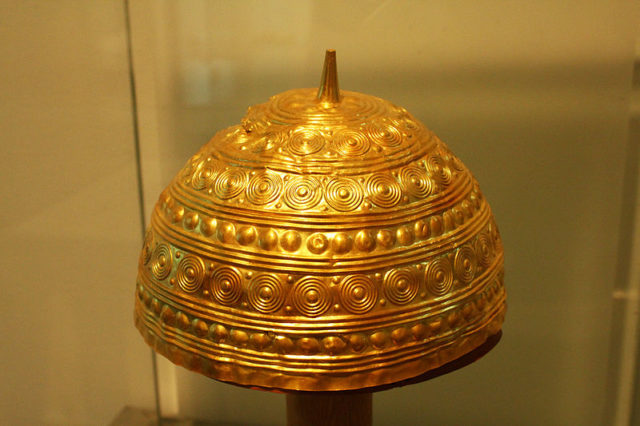
There have been several debates whether the object is truly a Helmet or a Bowl. Even some experts would agree that the object was neither a Helmet or a Bowl but rather an object that demonstrated a religious aspect because the individual gold circles are representing the Sun while the entire form of the object resemnles a Breast of the Female-earth.
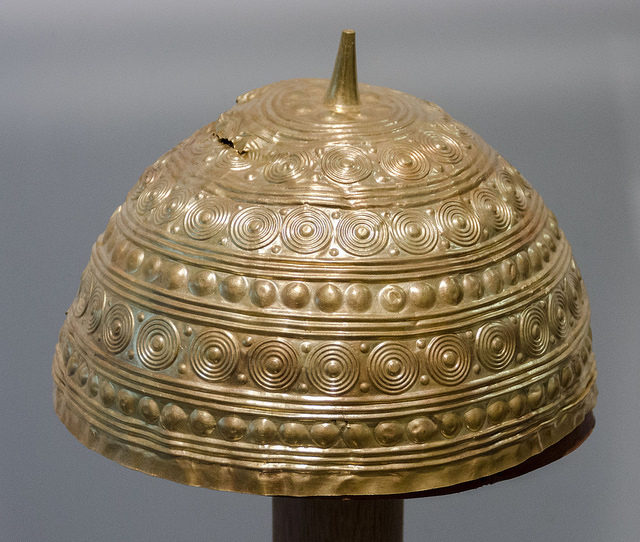
However, it has never been the subject of a monographic study. It has only inspired brief commentaries, scattered throughout a variety of essays.
These opinions have been overshadowed by comments regarding its formal counterparts, which have been the object of greater attention, such as the Treasure of Villena and the Bowls of Axtroki or by other finds of late Bronze Age conical golden hats of the Schifferstadt type.
